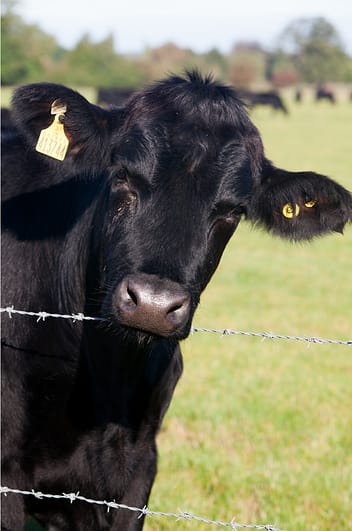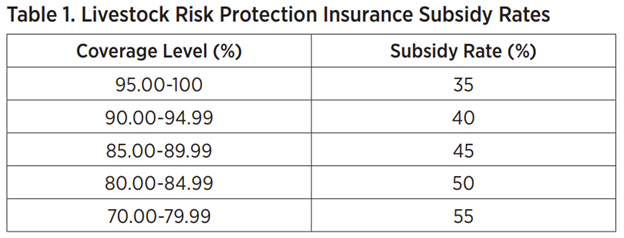Professional Assistance: Bagley Risk Management Techniques
Professional Assistance: Bagley Risk Management Techniques
Blog Article
Secret Factors to Consider When Choosing Livestock Threat Defense (LRP) Insurance Policy
When assessing choices for Animals Threat Defense (LRP) insurance, several vital elements require cautious consideration to guarantee effective threat administration in the agricultural market. Choosing the best coverage options tailored to your particular livestock operation is paramount, as is recognizing exactly how exceptional expenses associate with the level of defense offered. Furthermore, the qualification requirements for different sorts of livestock and the flexibility of the policy to adjust to changing scenarios are crucial aspects to consider. Furthermore, the efficiency and transparency of the insurance claims procedure can substantially influence the general experience and economic outcomes for livestock producers. By strategically navigating these critical variables, manufacturers can protect their financial investments and reduce prospective dangers properly.
Coverage Options
When thinking about Animals Risk Protection (LRP) insurance policy, it is vital to recognize the various protection choices readily available to mitigate threats in the agricultural sector. Animals Threat Defense (LRP) insurance coverage uses different insurance coverage choices customized to meet the diverse needs of animals producers. Bagley Risk Management. One of the main insurance coverage choices is cost protection, which shields against a decrease in market value. Producers can pick the protection level that lines up with their cost risk management goals, permitting them to secure their operations versus prospective monetary losses.
One more important protection alternative is the recommendation period, which figures out the length of time the protection is in result. Manufacturers can choose the recommendation period that best fits their production cycle and market conditions. Additionally, insurance coverage degrees and rates differ based upon the kind of animals being guaranteed, providing producers the flexibility to tailor their insurance plans according to their specific needs.
Recognizing the various coverage alternatives offered under Animals Risk Security (LRP) insurance policy is important for producers to make informed choices that successfully secure their animals operations from market uncertainties.
Costs Costs

Livestock Danger Security (LRP) insurance policy provides necessary protection options tailored to minimize risks in the agricultural sector, with a significant aspect to take into consideration being the calculation and structure of premium expenses. When determining premium prices for LRP insurance, numerous aspects come right into play. These consist of the kind and number of animals being guaranteed, the coverage degree selected, the current market costs, historic price data, and the length of the coverage duration. Insurance firms may also take into consideration the place of the ranch, as geographic elements can impact the total danger profile.
Insurance providers evaluate historic data on animals costs and production expenses to identify an appropriate costs that reflects the level of risk entailed. It is crucial for animals producers to meticulously assess premium costs and insurance coverage options to guarantee they are effectively protected versus prospective economic losses due to unfavorable market conditions or unanticipated occasions.
Eligible Animals
The decision of eligible animals for Livestock Danger Protection (LRP) insurance coverage entails careful consideration of certain criteria and characteristics. Animals kinds that are typically eligible for LRP insurance policy consist of feeder livestock, fed lambs, cattle, and swine.
Feeder cattle, for instance, are commonly eligible for LRP insurance coverage if they drop within specified weight varieties. Fed livestock may likewise be eligible, but they must over at this website satisfy certain weight and quality grade needs. Swine eligible for protection generally include market weight pets intended for massacre. Lambs are one more group of livestock that can be thought about for LRP insurance policy, with factors such as weight and age playing an important role in identifying their qualification.
Before selecting LRP insurance coverage for livestock, manufacturers ought to carefully review the eligibility requirements detailed by the insurance policy company to ensure their pets satisfy the required requirements for insurance coverage.
Plan Flexibility
Policy flexibility in Animals Danger Protection (LRP) insurance enables producers to tailor protection to suit their certain demands and run the risk of management techniques. This versatility equips livestock producers to customize their insurance coverage based on factors such as the type of livestock they have, market conditions, and specific threat resistance levels. One crucial element of plan versatility in LRP insurance policy is the capability to select insurance coverage levels that straighten with the producer's monetary objectives and take the chance of direct exposure. Producers can pick coverage levels that protect them versus potential losses because of fluctuations in animals rates, guaranteeing they are effectively insured without paying too much for unnecessary click to read protection. In addition, LRP insurance policy uses flexibility in plan period, permitting producers to choose insurance coverage periods that ideal fit their production cycles and marketing timelines. By providing customizable alternatives, LRP insurance policy allows manufacturers to effectively handle their danger exposure while protecting their livestock operations versus unforeseen market volatility.
Cases Process
Upon experiencing a loss or damage, producers can launch the claims procedure for their Animals Threat Security (LRP) insurance by without delay calling their insurance coverage service provider. It is important for producers to report the loss as quickly as feasible to quicken the insurance claims process. When connecting to the insurance policy company, manufacturers will require to offer in-depth info about the event, including the day, nature of the loss, and any kind of pertinent paperwork such as veterinary documents or market costs.

After the analysis is total, the insurance coverage service provider will certainly make a decision relating to the claim and connect the outcome to the manufacturer. If the insurance claim is approved, the producer will obtain payment according to the terms of their Livestock Danger Protection (LRP) insurance plan. Bagley Risk Management. It is crucial for producers to be knowledgeable about the claims process to make certain a smooth experience in the occasion of a loss

Final Thought
In conclusion, when picking Animals Danger Defense (LRP) insurance coverage, it is essential to think about insurance coverage options, premium prices, qualified livestock, plan versatility, and the insurance claims process. These vital aspects will certainly aid make certain that farmers and breeders are effectively shielded versus prospective threats and losses connected with their animals operations. Making an informed decision based on these factors to consider can eventually lead to much better economic safety and security and comfort for livestock manufacturers.
Livestock Risk Defense (LRP) insurance provides different protection choices customized to fulfill the diverse requirements of animals producers.The decision of qualified livestock for Animals Risk Protection (LRP) insurance protection entails mindful consideration of specific standards and features.Policy versatility in Animals Risk Protection (LRP) insurance allows manufacturers to tailor protection to suit their details demands and take the chance of administration approaches.Upon experiencing a loss or damage, manufacturers can initiate the cases process for their Animals Threat Security (LRP) insurance by without delay calling their insurance policy provider.In final thought, when selecting Livestock Threat Security (LRP) insurance policy, it is vital to think about coverage options, premium costs, qualified livestock, plan flexibility, and the claims procedure.
Report this page